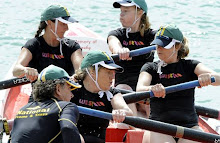Exercise 4.1
1. I use Blogger for this subject. It was easy to set up, up date and personalise. I chose to base my blog page on a template available that had a structured design for the ease of use for myself and visitors. I can see this would be a good tool in the classroom for incorporating IT but also as a continuous log book of class work, like a computerised exercise book. Students can refer back to notes and adjust them and teachers can monitor their progress through the content.
2. Design for growth and change
Once you have created your blog page, log on and you can easily make any changed to it by clicking customise. You can adjust the page layout and postings.
Create and maintain community feedback.
Blogs can be created using mobile phones to maintain continuous discussion. Blogger is available in many languages for world wide community feedback. You can also restrict the view of your blog to only allow certain uses access.
Allow your members to gradually take more control.
Blogger has a Share tool to let readers "Share" the blog's URL to Twitter, Facebook, or Google Reader. The Reactions Tool lets readers say what they think of the blog and the Followers tool lets readers leave their profile on your blog.
Exercise 4.2a
1. Patience- people involved in online discussion should wait until one conversation has ended before making a comment for uninterrupted conversation. In a classroom ‘hands up’ means to ask a question which is difficult to do online lol.
2. AWOL- let people know when you wish to leave the conversation
3. Host- the host has the responsibility to guide the conversation by suggesting a discussion topic.
Exercise 4.2b
Having an interesting group of people definitely makes the conversation fun and interesting like the Gmail chat discussion on food and TV shows a few weeks ago.
I am a new at online communities so being welcomed at any online gathering makes it comfortable and acknowledged.
Online communities allow people to follow discussions and have the opportunity to join in at any time.
Exercise 4.2c
It is important to set “rules of engagement” with online verbal exchange because it appears to be easy to be anonymous online which may entice some users to abuse the trust of fellow users. The moo policy is a document that clearly defines appropriate behaviour online if users are prepared to read it. A more authoritative approach for sites like digg, would have better results at discouraging inappropriate behaviour because users can report rude users.
Exercise 4.3
List C
Yahoo
Delicious
Teacher tube
Ning
Digg
Socialgo
Bubbl.us
I made the above list for a platform for learning and professional development because these sites have the option to control who is involved in the social network, good rules of engagement and users can share a variety of material such as text, photos and videos.
